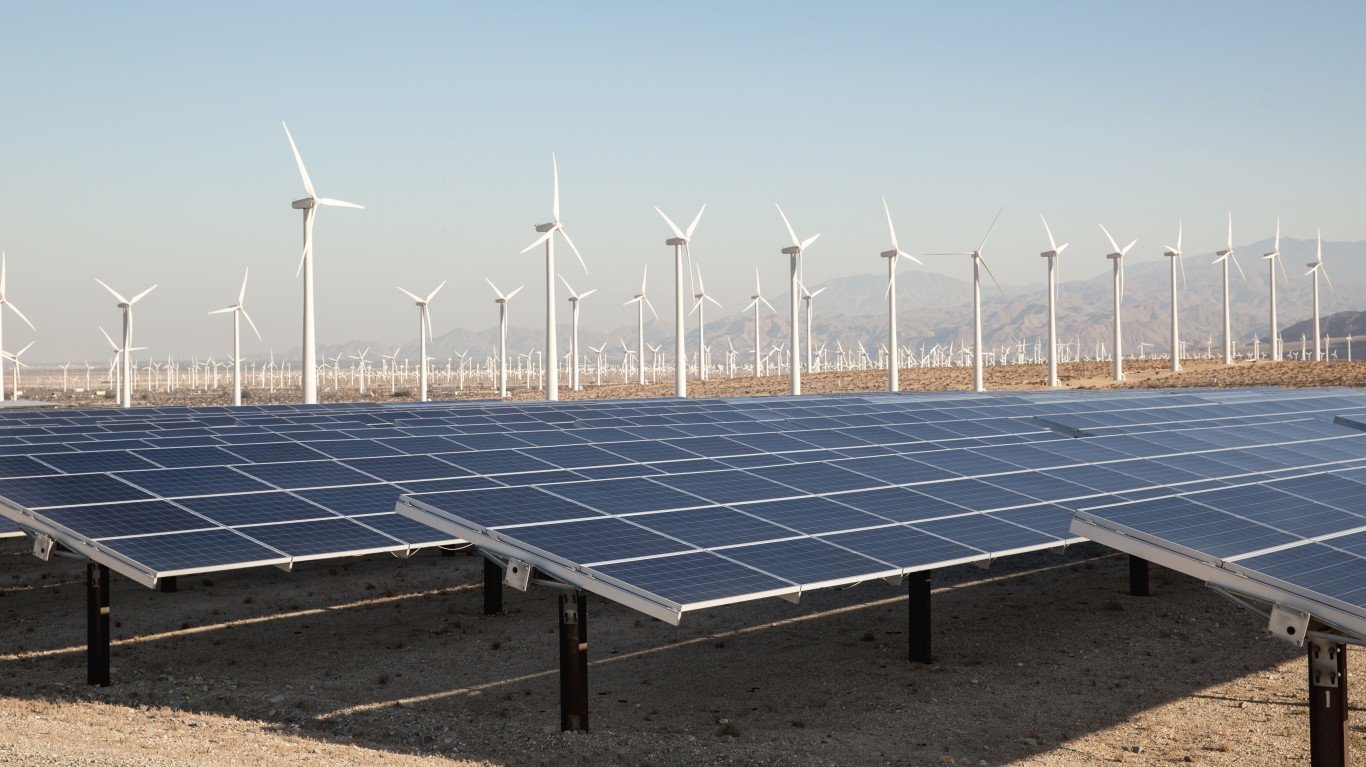

At Wednesday’s closing bell, shares of Chevron Corp. (NYSE: CVX) had added about 2% to their value and the company’s market cap was $142.1 billion. Exxon Mobil Corp. (NYSE: XOM) stock closed up about 0.3% for the day, with a market cap of about $141.7 billion. For the first time in more than 100 years, the descendent of Rockefeller’s Standard Oil was only the second-largest oil company in the United States.
[in-text-ad]
Both fossil fuel giants, however, fall short of the country’s largest energy company, NextEra Energy Inc. (NYSE: NEE), which closed Wednesday with a market cap of $145.5 billion, after adding about 2.4% to its share price.
Over the past year, NextEra’s share price has risen by nearly 30%, while Chevron’s has dropped by almost a third and Exxon’s has tumbled by virtually half.
Is there a message in the bottle, and will either Chevron or Exxon read and understand it?
NextEra’s power generation capacity totals around 25.4 gigawatts (GW), of which almost 78% is wind or solar power. Just over 10% is natural gas-fired or oil-fired.
A Monday story from Bloomberg reported that internal documents indicate that Exxon’s investments for the next several years total $210 billion and would increase the company’s greenhouse gas (GHG) emissions by 17%, roughly equal to the annual emissions of Greece.
At the same time, rivals BP PLC (NYSE: BP) and Royal Dutch Shell PLC (NYSE: RDS-A) are taking steps to reduce GHG emissions with a goal to reach net-zero on direct emissions by 2050 or even sooner. Cutting the carbon intensity of their products is a more distant goal. BP expects to reduce the carbon intensity of its fossil fuel products by 50% by 2050, while Shell is targeting a 65% reduction by the same year.
Exxon has committed to cutting the carbon intensity of its direct emissions by 10% at its Canadian affiliate, Imperial Oil, by 2023. Chevron plans a 5% to 10% cut in net carbon intensity of direct emissions from oil production and 2% to 5% in natural gas production by 2023. The company also intends to cut flaring intensity by 25% to 30% and methane emissions intensity by 20% to 25% by the same year. Both companies are using 2016 as their base-level year.
Those goals are not nothing, and they will move the needle, but not by much and not quickly enough to mitigate climate change. Chevron and Exxon are counting on natural gas, which has about half the carbon intensity of oil, to help them reach their modest goals.
Like Exxon and Chevron, BP and Shell will continue to pour the biggest share of their investments into fossil fuel production. During a webinar earlier this week, S&P Global Ratings senior director Simon Redmond commented that while the majority of investment will remain in oil and gas, the firm expects “increased investment across renewables businesses from the European majors, in particular.”
Demand for oil and gas, though stalled by the economic downturn caused by the COVID-19 pandemic, will return, especially for natural gas. At the same webinar, S&P Global Platts head of scenario planning Dan Klein said that the role of natural gas as a bridge fuel between coal and renewables in power generation “got narrower and shorter” due to the coronavirus outbreak.
There is little indication that either Exxon or Chevron recognizes the revolution in the energy market. Perhaps recent comments from the new CEO of Norway’s $1 trillion sovereign wealth fund will get their attention. Nicolai Tangen told the Financial Times that the fund should “use risk in a more clever way, especially by divesting for environmental, social, and governance (ESG) issues.”
Last year, under a different CEO, the fund identified 134 oil and gas exploration and production firms for divestment. The dollar amount, just $7.5 billion, is barely a rounding error. None of the world’s majors were included on the list.
In 2019, the fund reported environmental investments totaling $8.55 billion that returned 35.8% on the investment. These investments added 0.3 percentage points to the fund’s return last year ($3 billion). That was three times the return posted in 2018. The largest portion of the increase came from divesting the fund’s investments in coal.
Still, interest in ESG investing remains high and, with interest rates so low, major oil companies could issue their own corporate green bonds to help finance more substantial changes to the carbon footprints. That Exxon and Chevron, so far at least, have chosen to continue business mostly as usual should be a signal to investors of the companies’ prospects over the long term.
Take This Retirement Quiz To Get Matched With A Financial Advisor (Sponsored)
Take the quiz below to get matched with a financial advisor today.
Each advisor has been vetted by SmartAsset and is held to a fiduciary standard to act in your best interests.
Here’s how it works:
1. Answer SmartAsset advisor match quiz
2. Review your pre-screened matches at your leisure. Check out the
advisors’ profiles.
3. Speak with advisors at no cost to you. Have an introductory call on the phone or introduction in person and choose whom to work with in the future
Take the retirement quiz right here.
Thank you for reading! Have some feedback for us?
Contact the 24/7 Wall St. editorial team.
 24/7 Wall St.
24/7 Wall St.

